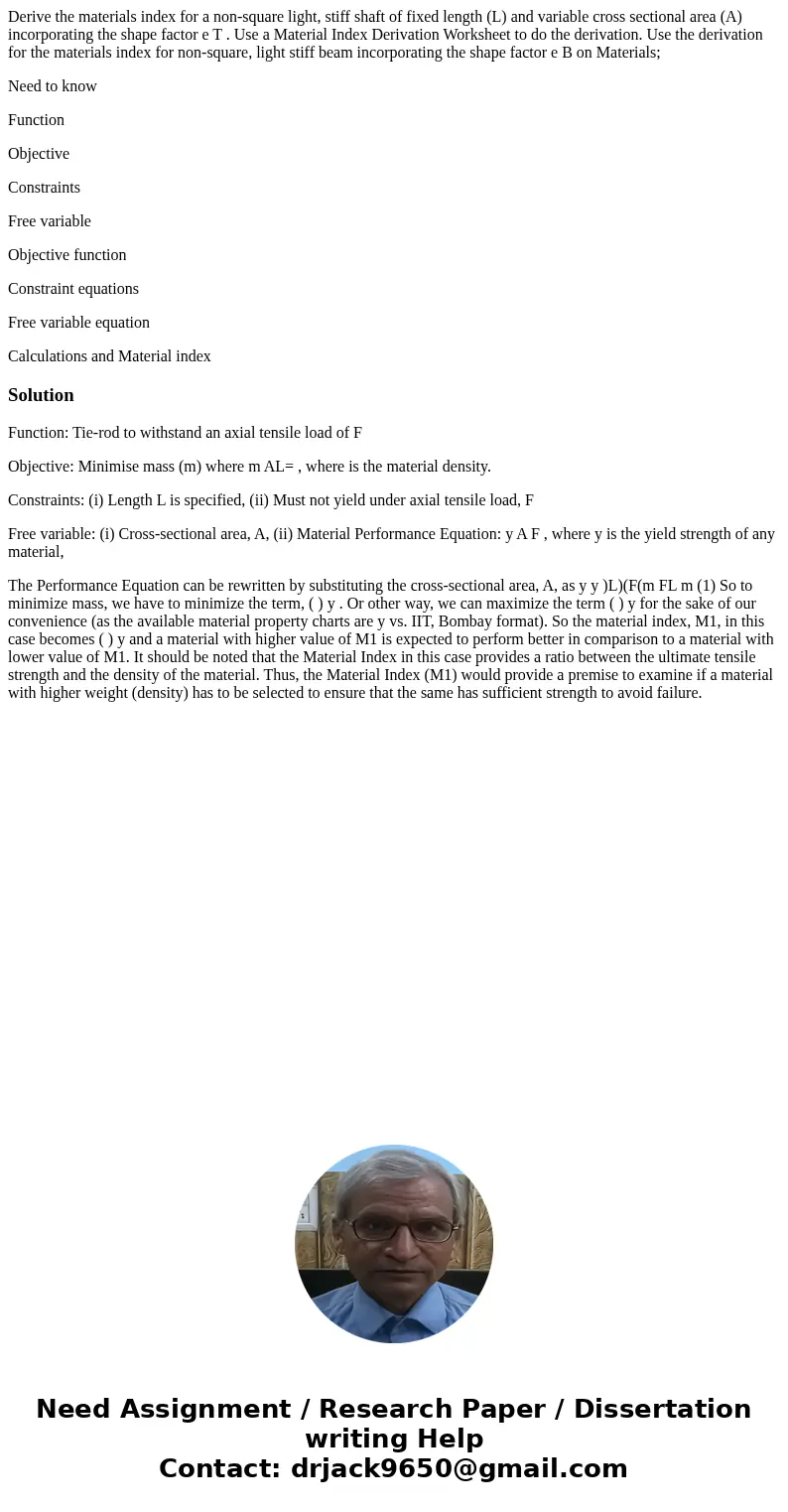Derive the materials index for a nonsquare light stiff shaft
Derive the materials index for a non-square light, stiff shaft of fixed length (L) and variable cross sectional area (A) incorporating the shape factor e T . Use a Material Index Derivation Worksheet to do the derivation. Use the derivation for the materials index for non-square, light stiff beam incorporating the shape factor e B on Materials;
Need to know
Function
Objective
Constraints
Free variable
Objective function
Constraint equations
Free variable equation
Calculations and Material index
Solution
Function: Tie-rod to withstand an axial tensile load of F
Objective: Minimise mass (m) where m AL= , where is the material density.
Constraints: (i) Length L is specified, (ii) Must not yield under axial tensile load, F
Free variable: (i) Cross-sectional area, A, (ii) Material Performance Equation: y A F , where y is the yield strength of any material,
The Performance Equation can be rewritten by substituting the cross-sectional area, A, as y y )L)(F(m FL m (1) So to minimize mass, we have to minimize the term, ( ) y . Or other way, we can maximize the term ( ) y for the sake of our convenience (as the available material property charts are y vs. IIT, Bombay format). So the material index, M1, in this case becomes ( ) y and a material with higher value of M1 is expected to perform better in comparison to a material with lower value of M1. It should be noted that the Material Index in this case provides a ratio between the ultimate tensile strength and the density of the material. Thus, the Material Index (M1) would provide a premise to examine if a material with higher weight (density) has to be selected to ensure that the same has sufficient strength to avoid failure.

 Homework Sourse
Homework Sourse